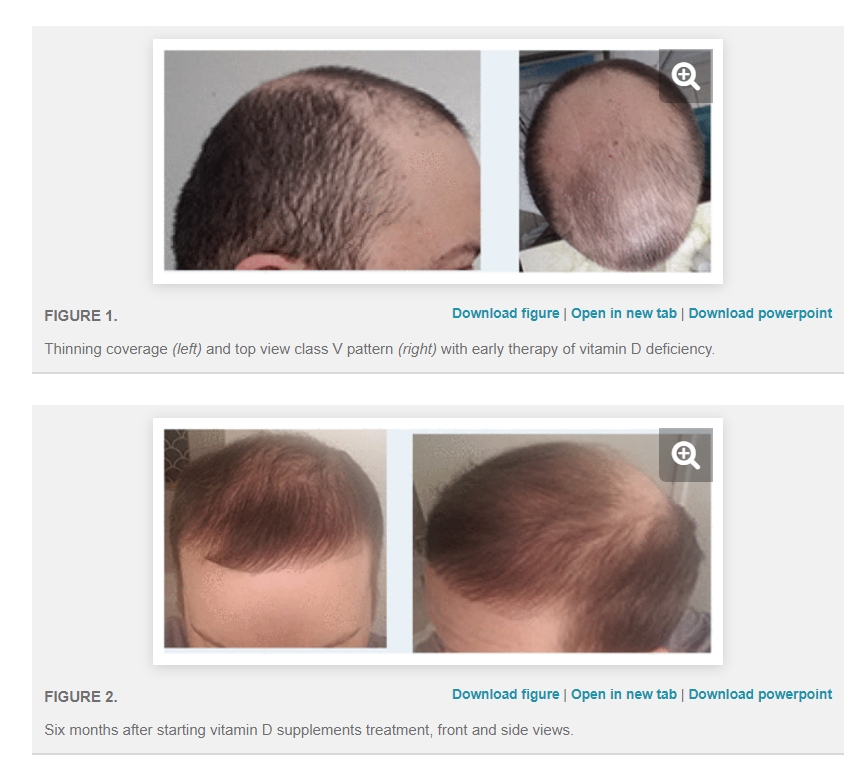A Cross-sectional Study of Plasma Trace Elements and Vitamins Content in Androgenetic Alopecia in Men
Irina N. Kondrakhina Biological Trace Element Research volume 199, pages3232–3241 (2021)
Androgenetic alopecia (AGA) is the most common variant of male pattern baldness in which occurrence and development of multiple genetic, hormonal, and metabolic factors are involved. We aimed to estimate plasma element content (Mg, Ca, Zn, Cu, Se, Fe), vitamin status (B12, D, E, and folic acid) in patients with AGA using direct colorimetric tests or atomic absorption spectrometry, and the influence of these parameters in the formation of various hair loss patterns. The study included 50 patients with I–IV stages of AGA divided into two groups with normal and high levels of dihydrotestosterone compared with 25 healthy individuals.
The presence of two patterns of pathological hair loss in the androgen-dependent (parietal) and androgen-independent (occipital) areas of the scalp was confirmed. It was shown that all patients with AGA have a deficiency of elements (Zn, Cu, Mg, Se) and vitamins (B12, E, D, folic acid). However, the hair loss rate was not due to their content. А positive interrelation between quantitative trichogram parameters in the occipital region and iron metabolism in pairs “hair density vs Fe” and “hair diameter vs ferritin” was shown. In turn, in the parietal region, an inverse correlation of hair diameter with plasma Cu level was found, the most pronouncing in patients with high levels of dihydrotestosterone. The obtained results indicate the importance of multiple micronutrient deficiencies in the AGA occurrence accompanied by the existence of two different hair loss patterns, differently related to the content of certain trace elements and androgens in the blood.














